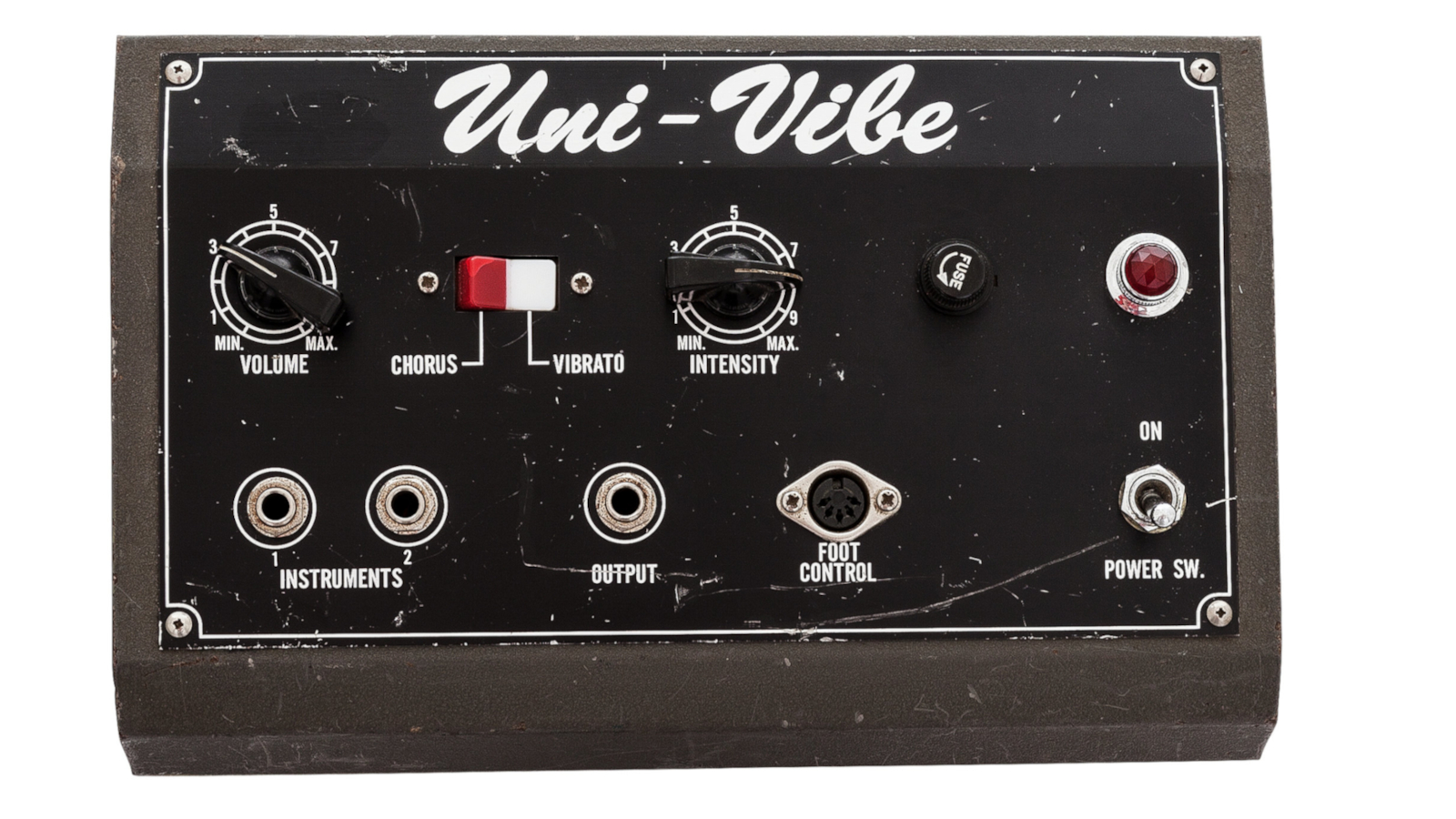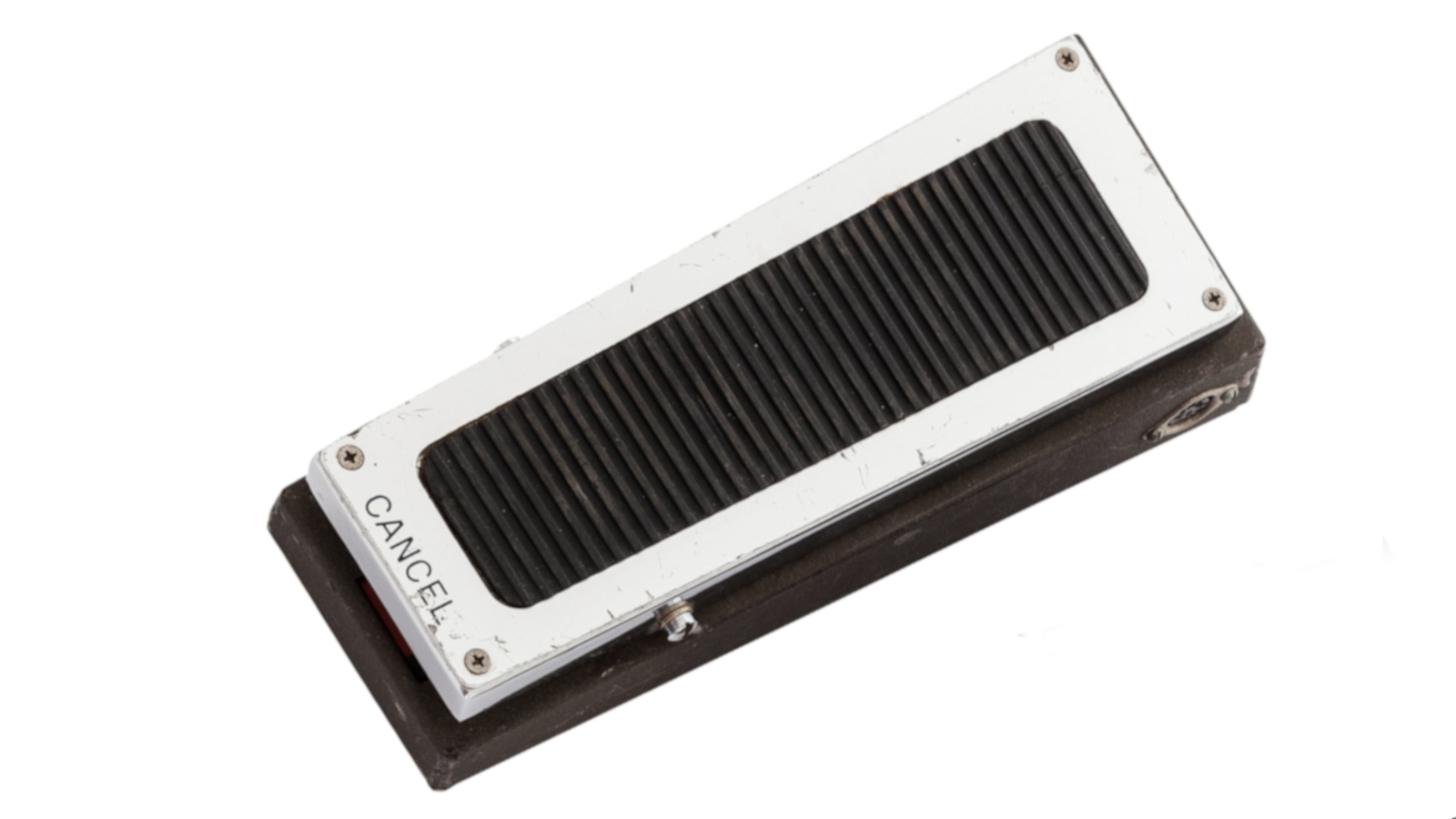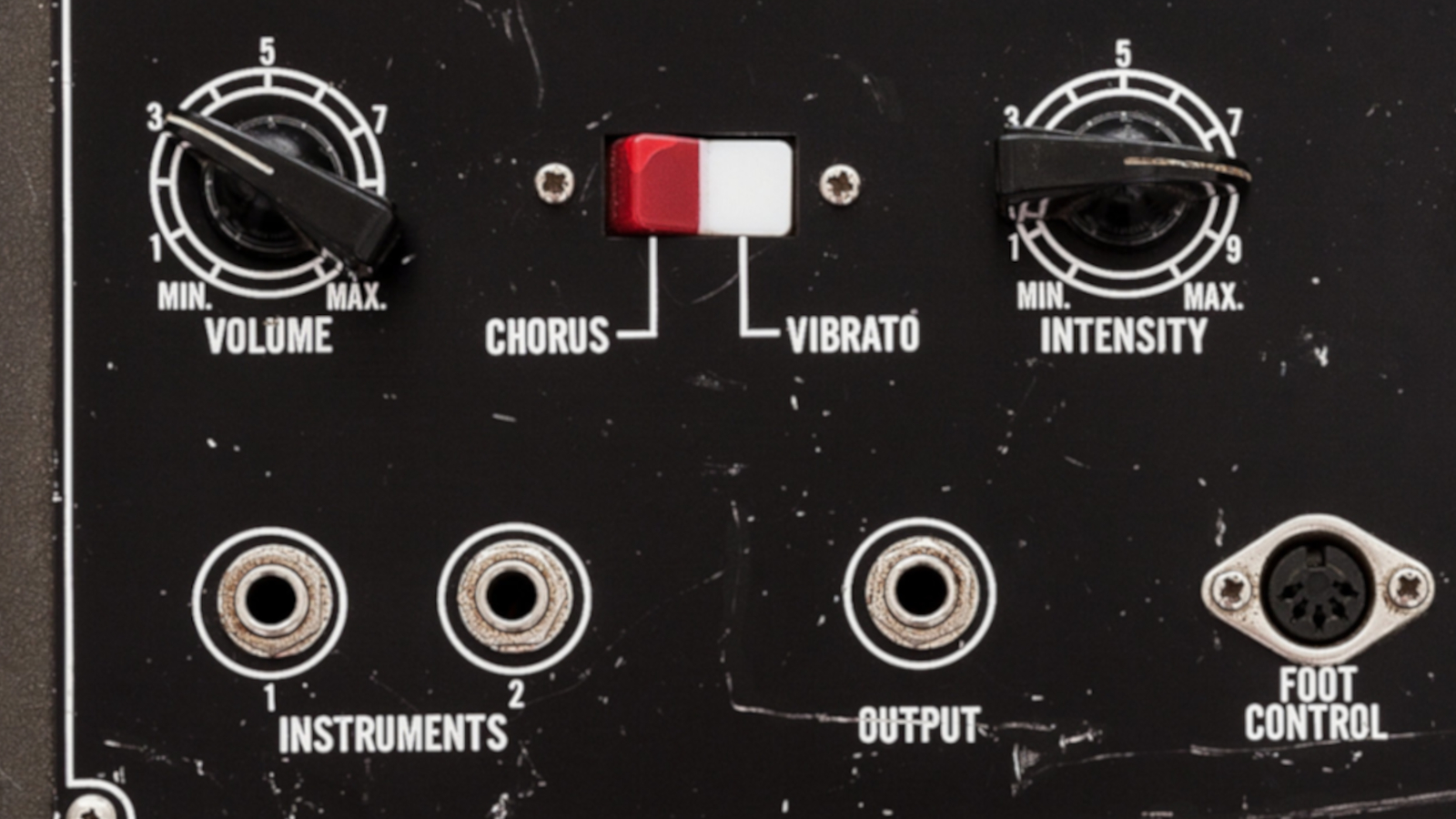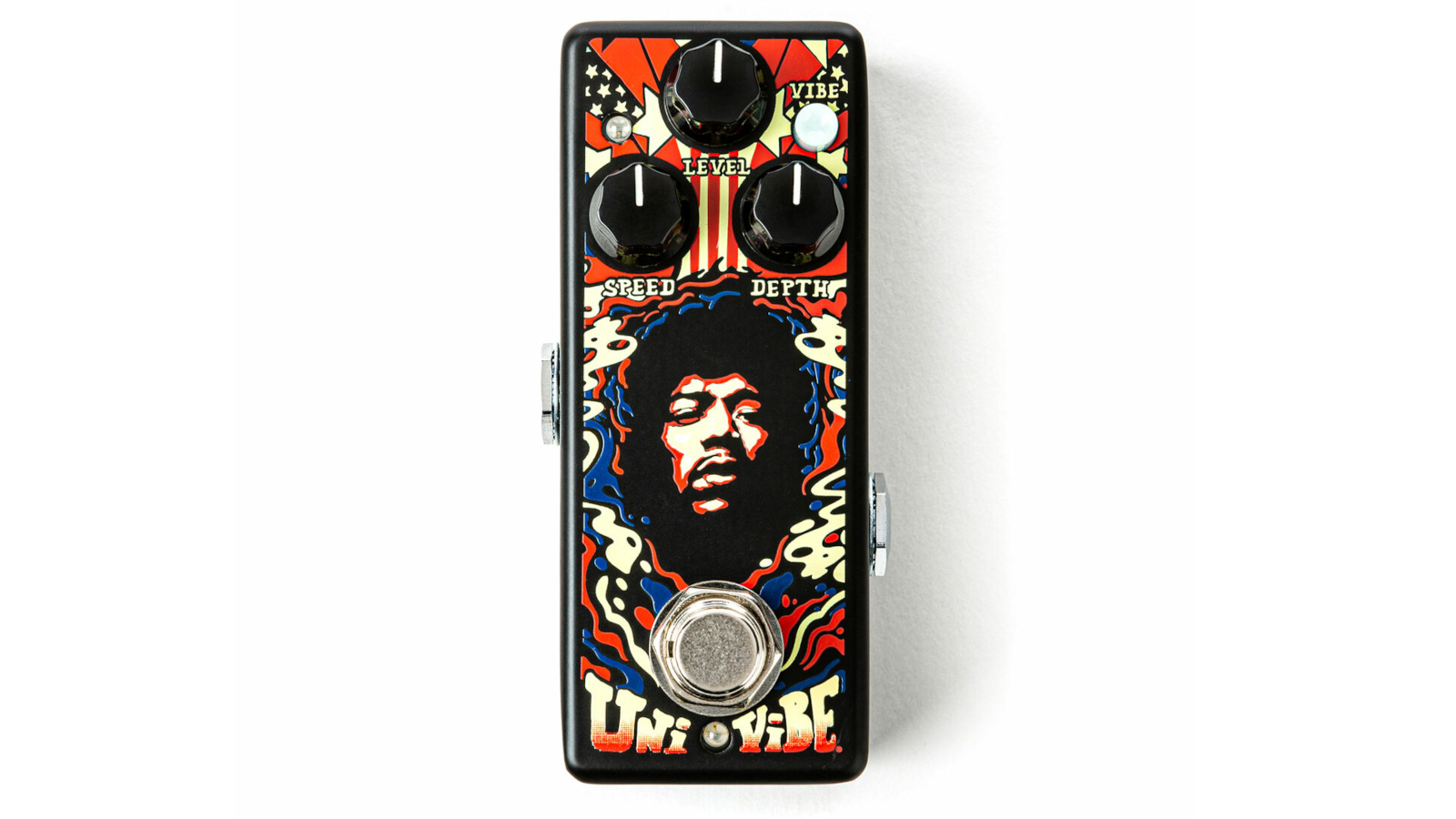The Univox Uni-Vibe was the Final Stompbox to Land in Jimi Hendrix’s Effects Chain
More than 50 years on, this classic effect remains the epitome of rotary pedals.

The genus of electric guitar-gear worship includes a significant subcategory that instantly defines a species of eternal classics that we can simply label “anything Jimi used.”
Among the ever-iconic pedals canonized by Hendrix’s touch are the Fuzz Face, Vox Wah-Wah, Roger Mayer Octavia and – the last to land in the chain – the Univox Uni-Vibe.
Acquired by the legendary artist in 1969 approximately a year before his death, this effect appeared only on recordings and live performances made after that time, but those that employ it represent a notable evolution in Hendrix’s sound, and they likely inspired its use by the many other great guitarists who came along to help show the world what the Uni-Vibe can do.
New solid-state effects units were hitting the ground fast and hard in the late ’60s, and some stuck in the market while others faded relatively quickly into obscurity. Despite its emotive sonic capabilities, the Uni-Vibe might have been among the latter if not for a quick re-jig of the supply chain early on.
The circuit was designed by Japanese engineer Fumio Mieda in the latter part of the mid ’60s and first marketed in Japan around 1967 as the Honey Vibra Chorus.
With the implosion of the Honey company, the effect was taken up in 1968 by fellow Japanese manufacturer Shin-ei, with a modification added to include an external speed-control pedal. This is the unit supplied for distribution in the U.S. by Univox as the Uni-Vibe.

While it feels natural to call it a pedal, the Uni-Vibe was conceived as a desk-top unit for keyboards and includes no foot switch; the treadle-style external speed pedal cancels out the effect when placed in the heel-down position. In the truest sense, the Uni-Vibe represents the evolution of cumbersome electro-mechanical sound-effects devices into more compact, portable solid-state replications.
Get The Pick Newsletter
All the latest guitar news, interviews, lessons, reviews, deals and more, direct to your inbox!
It was intended as a representation of the rhythmic, swirling, phasey sound of the Leslie rotary speaker that was not only hugely popular with the electronic organ but was also being used more and more with the electric guitar. Unfortuately, the oversized cabinets were a pain in the back to carry from show to show.
As is so often the case, Mieda’s attempt to squeeze the sound of a 140-pound box containing a revolving drum and tweeter horn into a desk-top unit didn’t hit the mark precisely. But it created an entirely new sound in the process, one that many players would prefer to the original, regardless of weight and portability.

The circuit inside the Uni-Vibe’s semi-wedge-shaped metal housing is, in fact, a four-stage phaser. Each stage contains a coupled light bulb and photocell and is tuned slightly differently so that a chorusing effect is produced as the oscillator sweeps the signal across them.
The unit’s Chorus/Vibrato switch let you select a blend of dry and wet signals (Chorus) or go fully wet (Vibrato) for a more throbbing and extreme effect.
Many early chorus pedals were attempts to produce an even more compact, efficient emulation of the Uni-Vibe. As such, the Uni-Vibe is clearly the first of the solid-state effects units that attempts to create a chorus sound, yet it remains a thing unto itself – more a phaser-meets-chorus than a proper member of the chorus pedal family.
The song “Machine Gun” from the 1970 live album Band of Gypsys is often cited as a premier example of Hendrix’s use of the Uni-Vibe, and indeed it’s a good one. But he also made excellent use of the effect on the various live and studio cuts of “Izabella,” and perhaps employed it to most dramatic impact in the Woodstock performance of “The Star-Spangled Banner,” in which the Uni-Vibe’s incessantly swooshing chorus helps cast a psychedelic haze over Hendrix’s sonic recreation of the death and destruction then raging in Vietnam.
David Gilmour displayed the Uni-Vibe’s ability to enhance dreamy soundscapes on Pink Floyd’s “Breathe,” from 1973’s The Dark Side of the Moon, and Robin Trower is invariably cited as another creative proponent of the effect, which is heard throughout his 1974 album, Bridge of Sighs.
The title track makes a good case for its emotive power, though “Too Rolling Stoned” and “Lady Love” also stand out. Trower, like Hendrix before him, also shows how well a fuzz pedal partners with the Uni-Vibe, pushing it into a chewy, textured, vocal snarl that helps to make the incessant swoosh a little less seasickness-inducing.
Original Shin-ei Uni-Vibes have become extremely collectible, and quite expensive, but several contemporary makers have rendered satisfying re-creations of the sound. The Jim Dunlop company now owns the Uni-Vibe trademark (along with the Jimi Hendrix and MXR trademarks), so competitors have to be creative with their otherwise telltale model names.

Fulltone’s Deja Vibe and Mini Deja Vibe, Sweet Sound’s Ultra Vibe and Mojo Vibe, and Roger Mayer’s Voodoo Vibe are all respected and longstanding renditions of the original sound, generally rendered in somewhat reconfigured formats.
Relatively high-end, boutique offerings such as the Sabbadius Woodstock Funky-Vibe and Funky-Vibe Fillmore East, and Shin-ei’s own Vibe-Bro aim at more thorough re-creations of both form and function, while Voodoo Lab’s Micro-Vibe, JHS’s Unicorn V2 Analog Uni-Vibe, Dunlop’s JHM Series Uni-Vibe and MXR’s M68 Uni-Vibe provide more affordable options that yield acclaimed sonic results.
Essential Ingredients
- Entirely analog solid-state circuit
- Four tuned lightbulb-and-photocell phaser stages
- Switch for chorus or vibrato
- Controls for volume and intensity
- External controller pedal for speed
Dave Hunter is a writer and consulting editor for Guitar Player magazine. His prolific output as author includes Fender 75 Years, The Guitar Amp Handbook, The British Amp Invasion, Ultimate Star Guitars, Guitar Effects Pedals, The Guitar Pickup Handbook, The Fender Telecaster and several other titles. Hunter is a former editor of The Guitar Magazine (UK), and a contributor to Vintage Guitar, Premier Guitar, The Connoisseur and other publications. A contributing essayist to the United States Library of Congress National Recording Preservation Board’s Permanent Archive, he lives in Kittery, ME, with his wife and their two children and fronts the bands A Different Engine and The Stereo Field.
"The only thing missing is the noise from the tape loop." We review the Strymon EC-1 Single Head dTape Echo, a convincing take on a very special vintage tube Echoplex
"BigSky MX will be replacing the BigSky as my go-to reverb pedal. I’ve heard nothing that covers all the bases with such pristine and detailed audio quality." We crowned the Strymon BigSky MX the champ of multi-reverb pedals











